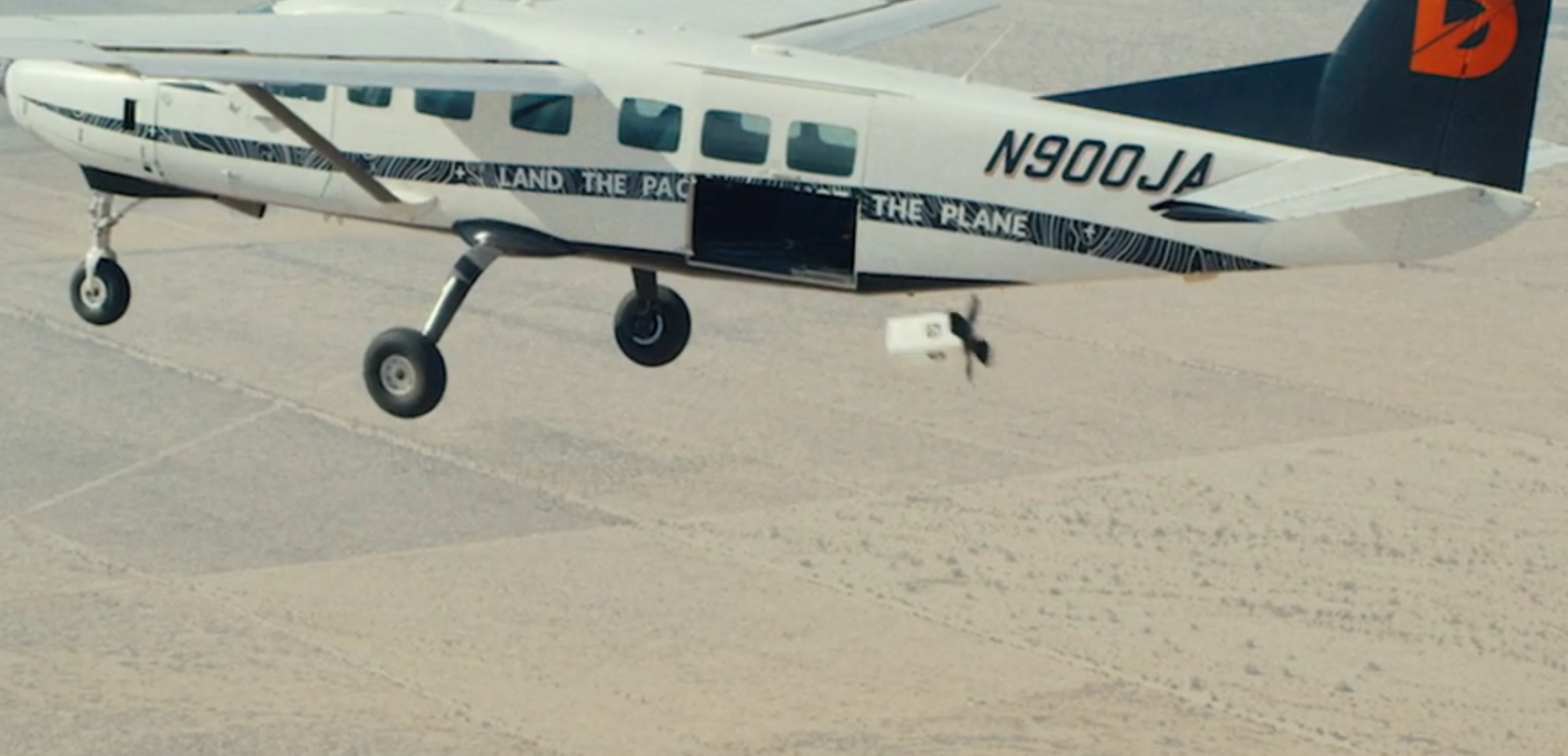
Robohub.org
Let’s talk about the future of Air cargo.
You invest in the future you want to live in. I want to invest my time in the future of rapid logistics.
Three years ago I set out on a journey to build a future where one-day delivery is available anywhere in the world by commercializing high precision, low-cost automated airdrops. In the beginning, the vision seemed almost so grand and unachievable as to be silly. A year ago we began assembling a top-notch team full of engineers, aviators and business leaders to help solve this problem. After a lot of blood sweat and tears, we arrive at present day with the announcement of our $8M seed round raise backed by some amazing capital partners and a growing coalition excited and engaged to accelerate DASH to the next chapter. With this occasion, we have been reflecting a lot on the journey and the “why” that inspired this endeavor to start all those years ago.
Why Does This Problem Exist?
To those of us fortunate enough to live in large well-infrastructured metropolitan cities, deliveries and logistics isn’t an issue we often consider. We expect our Amazon Prime, UPS, and FedEx packages to arrive the next day or within the standard 3-5 business days. If you live anywhere else these networks grind to a halt trying to deliver. For all its scale, Amazon Prime services less than 60 percent of zipcodes in the US with free 2-day prime shipping. The rural access index shows that over 3 Billion people, live in rural settings and over 700 million people don’t live within easy access to all-weather roads at all. Ask manufacturers in need of critical spare parts in Montana, earthquake rescue personnel in Nepal, grocery store owners in mountainous Columbia, or anyone on the 20,000 inhabited islands of the Philippines if rapid logistics feels solved or affordable. The short answer – it’s not.
Before that package is delivered to your door it requires a middle mile solution to move from region to region. There is only one technology that can cross oceans, mountains, and continents in a single day, and that is air cargo.
Air cargo accounts for less than one percent of all pounds delivered, but over 33 percent of all shipping revenue globally. We collectively believe in air cargo and rely on it to get our most critical and immediate deliveries, including a growing share of e-commerce and just in time deliveries. If you want something fast, it’s coming by airplane. There is no substitute.
However, the efficiency and applications for air cargo break down when the plane has to land. While the 737 can fly over 600 mph and thousands of miles, it requires hundreds of millions in infrastructure, airports, and ground trucking to get cargo from the airport to your local warehouse making it very costly for commercial deliveries. The ground infrastructure has to exist on every island in the Philippines, every mountain town in Columbia and every town in Nepal. This infrastructure has to reach both sides of every mountain or island anywhere you want things fast. Even when you can land at a modern airport take-off and fuel burn during climb can account for upwards of 30 percent of an entire flight’s fuel use and drives insurance and maintenance costs from landing and takeoff cycles. This problem is so intrinsic to air cargo and logistics it almost seems natural. Well of course flyover states and rural areas don’t get cheap, fast, and convenient deliveries. Are you going to land that 737 at 20 towns on the way from LA to New York City? We fly over potential customers on our way to big urban cities with modern infrastructure even though only a minority portion of the world’s population lives there. Something has to change.
Our solution
To solve this problem is simple in thought. Yet this has been one of the most complex tasks I’ve had the honor of working on in my engineering career. Land the package, not the plane. By commercializing high-precision low-cost air drops you can decouple airplanes from landings, runways and trucks. Suddenly a delivery to rural Kansas is just as fast and cost-effective as a major coastal city. Fuel, insurance, utilization rate, service improvements, coverage area, and-and-and, so many metrics improve overnight in significant ways if an existing aircraft can deliver directly to the last mile sorting facility and bypasses much of the complexity, cost and infrastructure needed for traditional hub and spoke networks.

DASH Systems performing air drop tests in Southern California (image from DASH Systems)
Perhaps one of the most common questions I received when I started DASH why hasn’t [insert your preferred enterprise organization here] done this before? Without taking a detour conversation on why large enterprises historically struggle with innovation, the simple answer is: Because now is the time. Advancements in IoT, low size weight and power flight controllers coupled with a career implementing automation in safety-critical environments meant that the necessary ingredients were ready. Tremendous credit is due to some of the most brilliant engineers, scientists and developers I’ve had the pleasure of working with who took to task carving away raw ideas and rough prototypes into aerospace grade commercial products. All with the bravery to do so while working outside the confines of existing aerospace text books.
Beyond the intricacies of technology was a personal impetus to implement. My father’s family has origins in Barbados, during hurricane season we would make the call, when the phone lines were restored, to ask “is everything okay?” It often felt like a roll of the dice if they would be spared that year in a sick game of roulette that someone else would lose. With islands by definition nearly all help and aid have to come from aboard, but how can supplies be distributed when ports are destroyed, runways damaged and roads washed out? To me, it is a moral imperative to help, but also to build self-sustaining commercial solutions that can scale to help more in the future.
This thought process was put to the test in 2017, just weeks after starting to seriously contemplate and study the ideas that became DASH. Hurricane Maria hit Puerto Rico. I awoke just as millions of others to witness one of the worst hurricanes to make landfall in 100 years. That day we started making calls, 10 days later we were flying inland in a rented Cessna 208 delivering thousands of pounds of humanitarian supplies via air drops to cut off communities. The take away was that if this could be done safely and legally on an idle Fedex feeder aircraft, if those on the ground were willing and ready for rapid logistics at the same price they would have paid, why did it have wait until a natural disaster to strike? DASH exists because there is no technology, process, or company that can honestly make the claim of delivery to anywhere or even most places in under 2 days. We in large cities have come to enjoy it and expect it, yet in the same breath, we cut the conversation short for those geographically situated elsewhere. Our solution exists and with the hard work of an amazingly talented team and excellent partners continue to scale and grow until that one day that claim can be made.
Our Future
The story of DASH is far from over, our vision is rapid logistics anywhere and there is a flight path ahead of us to get there. Today, DASH is advancing the state of the art of precision air drop technology, tomorrow we are looking to deliver into your community wherever it is and despite the circumstances. The entire globe deserves the same level of service and convenience. The list is too long to thank everyone who has helped DASH get to where we are today, and growing longer every day. Instead I can offer up, look to the skies you may see your next delivery safely and precisely coming down to a location near you.
Joel Ifill is the founder and CEO of DASH Systems. He can be found at www.dashshipping.com and reached at inquiries@dashshipping.com we are always on the hunt for talented roboticists engineers and developers who enjoy aviation, inquire at HR@DASHshipping.com




